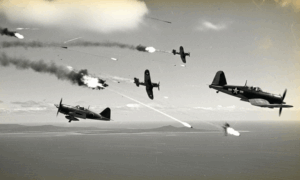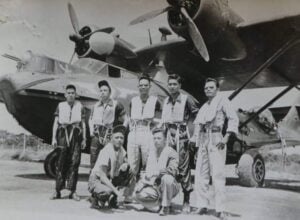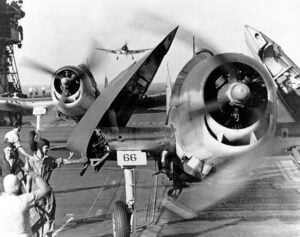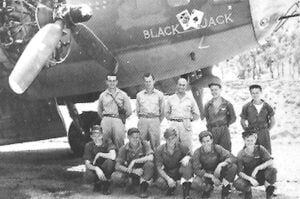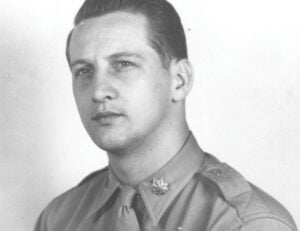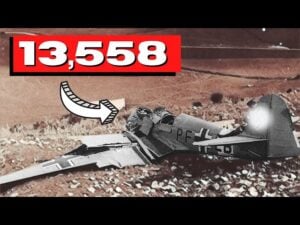The Story of the Survivor on USS Bunker Hill, Hit by Two Kamikaze Strikes in a Devastating Attack off Okinawa
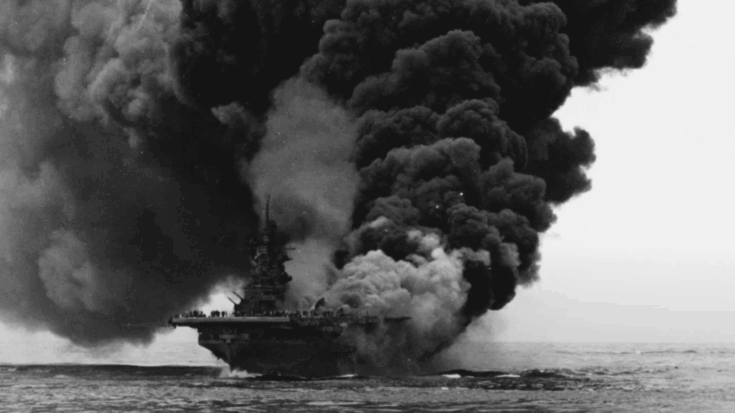
WWII Interviews / YouTube
Early Life and Navy Training
Emerson J. Smith was born on August 30, 1922. After the attack on Pearl Harbor, he decided to volunteer for the U.S. Navy. On November 11, 1942, he officially joined and was soon sent to Great Lakes for training. After three months there, he was transferred to Millington, Tennessee, where he trained as an aviation ordnanceman, despite having no experience with weapons.
He later joined the crew of the aircraft carrier USS Bunker Hill. Smith remembered being impressed by the size of the ship. His unit trained and traveled down to the Panama Canal before heading to the Pacific. Their compartment was located just beneath the flight deck, and daily life on the ship was mostly routine at first.
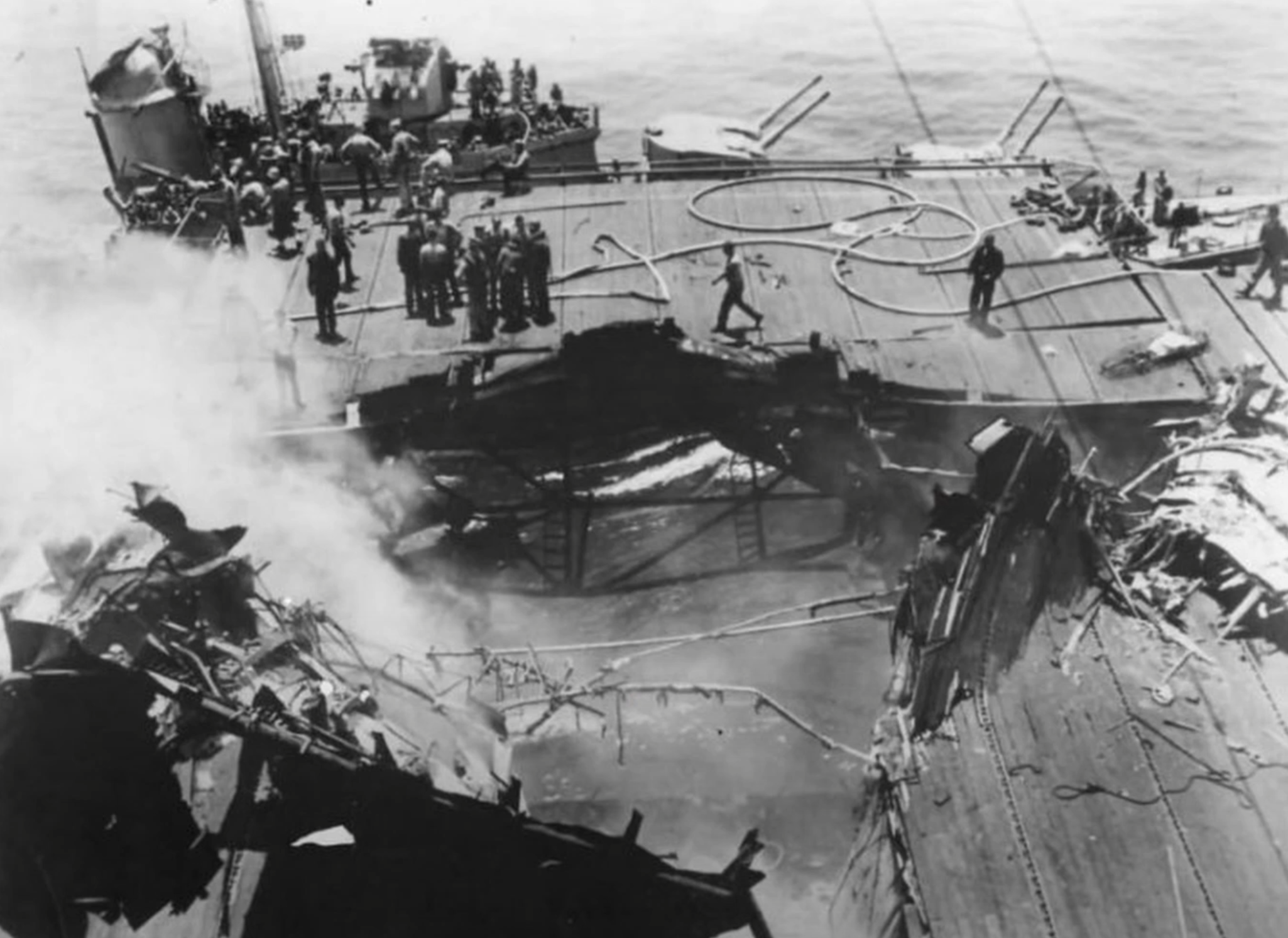
Serving on the Flight Deck
Smith’s job was to load bombs, rockets, and machine gun ammunition on the ship’s planes—initially Corsairs and later SB2C Helldivers. He checked for spent rounds by taping over gun barrels, a method that revealed if they had been used in combat. He also loaded bombs ranging from 100 to 1,000 pounds, sometimes by hand and other times using a hoist.
He saw action in the Marshall Islands, Saipan, Tarawa, Guam, and Truk. Damage to returning aircraft was common. Planes often came in damaged from battle or missed arrestor cables, crashing into barriers or going overboard. Smith recalled how challenging it was to land safely on a moving carrier, especially in rough seas or darkness.
Casualties and Close Calls
Accidents were also common on the flight deck. Smith witnessed several young sailors killed by spinning propellers while working too close to the planes. He personally avoided serious injury until the Bunker Hill was struck by two kamikaze planes off Okinawa in May 1945.
He was not at general quarters when the attack occurred around 10 a.m. He found himself trapped between fires on the hangar and flight decks. Many of his fellow sailors had been hit by shrapnel. Using supplies from a first aid locker, he treated their wounds with morphine and sulfathiazole. He remembered the intense heat rising through his shoes and helped evacuate wounded men before deciding to abandon ship.
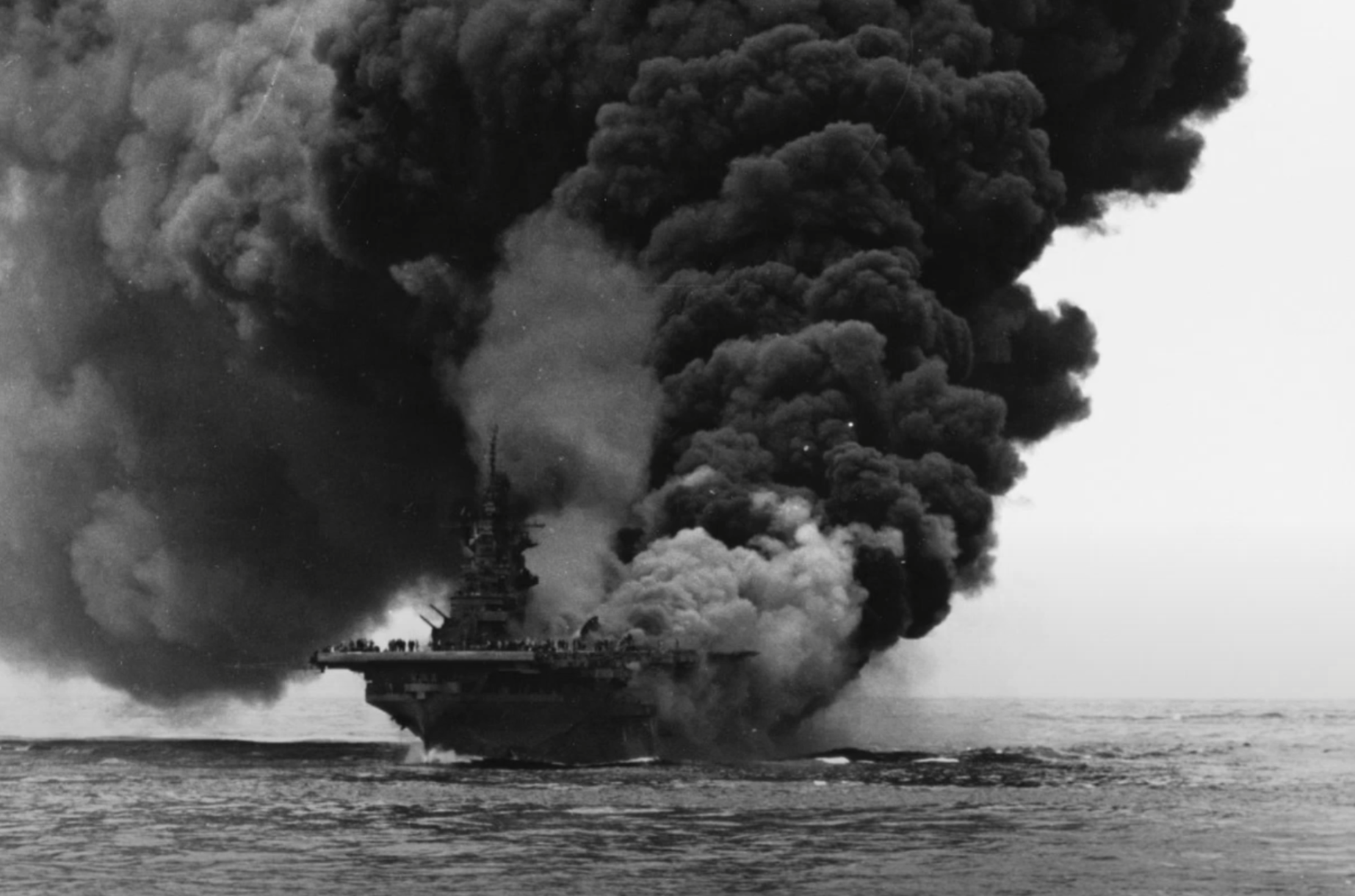
Escape and Rescue
Smith jumped overboard with another sailor who couldn’t swim. He swam away from the ship to avoid being pulled under by the screws. Enemy planes were still in the air. A destroyer attempted a rescue but had to move on. Later, another destroyer returned, lowered a cargo net, and brought Smith and two others aboard.
Aftermath and Reflections
The next day, Smith rejoined the Bunker Hill using a breeches buoy. The ship had suffered heavy damage. The heat had warped steel decks and melted lockers. Many sailors died below due to smoke inhalation, as the ship had not been at general quarters and the hatches had been open.
Smith eventually left the Navy in December 1945. He attended college, married, raised three children, and became a dentist. He practiced for 36 years and traveled to 49 states. Despite the hardship, he looked back at his service with solemn reflection, proud of those who served alongside him.
Full interview below:














